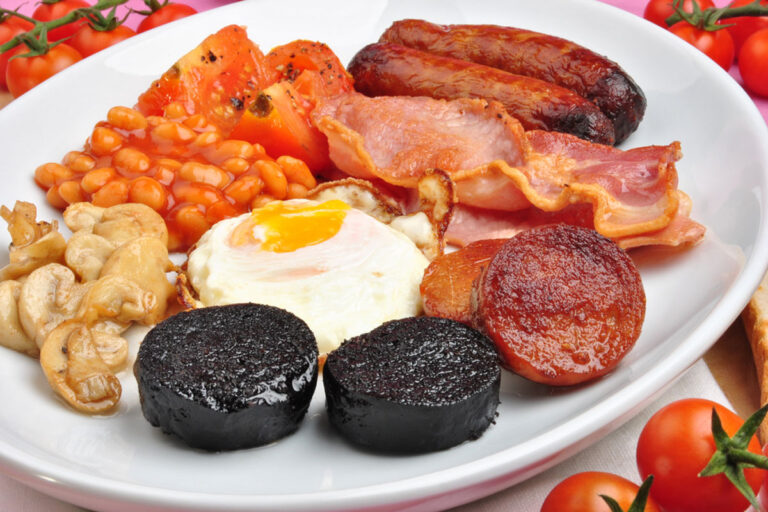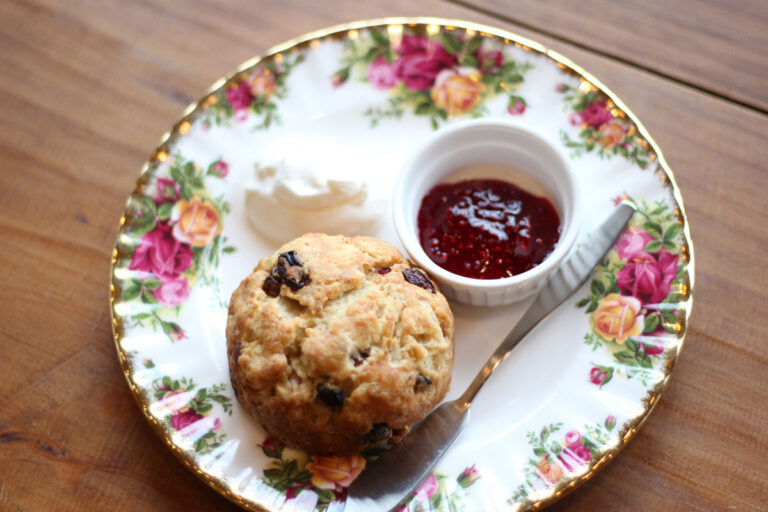Irish butter has a well-deserved reputation for being of outstanding quality and having a memorable flavor. This golden pleasure is distinguished from other butters on the market by its rich, creamy flavor and velvety texture. But what makes Irish butter so unique? Let’s delve into the secrets of Irish butters creamy taste, examining its distinct qualities and the reasons that contribute to its unequaled excellence.
The Lush Irish Pastures
The lush and verdant pastures of Ireland are a distinguishing feature of Irish butter, contributing significantly to its high quality and particular flavor profile. Ireland’s distinct topography and climate make it a perfect location for dairy farming, allowing cows to flourish on the varied and nutritious vegetation that blankets the countryside.
Ireland’s moderate and moist climate, driven by the Gulf Stream and the Atlantic Ocean, delivers abundant rainfall all year. This plentiful water supply keeps the pastures lively and green even during the dry summer months. Rain and mild temperatures promote the growth of lush grasses, herbs, and clover, which are the major food of Irish cows.
Unlike cows in other parts of the world, Irish cows have the luxury of grazing freely on open pastures for the most of the year. This grazing approach, known as pasture-based farming, allows cows to wander freely and feast on the land’s natural abundance. The ability to graze outdoors boosts their physical well-being because it provides them with space to move, access to fresh air, and natural sunlight.
Irish cows eat primarily fresh green grass, which is nutritionally superior to preserved or dried feed. The grasses of Irish pastures are diverse and rich in critical nutrients like as vitamins, minerals, and antioxidants. This natural and diverse diet benefits the cows’ overall health and well-being, resulting in high-quality milk.
Clover, another key component of the cows’ diet, further enhances the quality of Irish butter. Clover is a leguminous plant that thrives in Irish pastures and has the unique ability to fix nitrogen from the atmosphere, enriching the soil. This nitrogen fixation improves the soil’s fertility, leading to the growth of nutrient-rich grasses. Clover also imparts a delicate and slightly sweet taste to the milk, contributing to the butter’s distinct flavor.
Irish cows also have access to numerous wild herbs and plants that grow naturally in pastures. Wild thyme and meadowsweet, for example, give subtle aromatic nuances and depth to the flavor profile of Irish butter. Cows and their surroundings interact to form a harmonious cycle in which the cows graze on nutrient-rich pastures and their milk, in turn, reflects the flavors and attributes of the land.
Ireland’s mild and damp climate, nutrient-rich soil, and diverse pastureland provide the ideal environment for producing superb butter. The cows’ natural diet of fresh green grass, clover, and wild herbs imparts distinct flavors to their milk and provides a greater butterfat level. As a result, Irish butter distinguishes itself with its unrivaled creaminess, rich flavor, and distinct spirit of the Irish countryside.
Grass-fed cows and a greater butterfat content
The habit of mostly grass-feeding cows in Ireland contributes significantly to the remarkable quality and rich flavor of Irish butter. Farmers in Ireland have long recognized the benefits of allowing their cows to graze freely on lush green pastures, and this traditional method has come to be associated with the production of high-quality dairy products.
Grass feeding is the technique of feeding cows a diet mostly made up of fresh grass. Because of the favorable climate and good soil, the Irish countryside has an abundance of nutrient-rich grasses, making it a perfect place for keeping grass-fed cows. Cows graze on delicate shoots and leaves of several grass varieties, absorbing a variety of nutrients.
This grass-based diet has a significant impact on the composition of cow milk, especially the butterfat level. Butterfat is a naturally occurring fat found in milk that contributes significantly to the texture, flavor, and overall quality of butter. Grass-fed cows give milk with a higher butterfat percentage than cows fed predominantly preserved or dry grain.
The rich and diverse nutritional composition of grasses, which includes important fatty acids, leads to the greater butterfat content of grass-fed cow milk. The grasses give a balanced ratio of omega-3 and omega-6 fatty acids to the cows, which is advantageous to human health. As a result, grass-fed cows’ milk includes more of these beneficial fatty acids, which are then concentrated in the butter prepared from their milk.
One of the reasons that contribute to Irish butter’s delicious smoothness and sumptuous texture is its increased butterfat level. Irish butter typically has a minimum fat percentage of 82%, which exceeds the criteria of many other types of butter. Irish butter has a creamy, velvety feel that melts softly and indulgently in the mouth due to its increased fat content.
The higher butterfat level improves not just the texture but also the flavor of Irish butter. The inherent qualities in milk are carried and amplified by butterfat, resulting in a more distinct and pleasing taste. The enhanced fat level also helps the butter maintain moisture, making it ideal for baking, frying, and spreading.
Aside from its effect on texture and flavor, Irish butter’s increased butterfat concentration makes it an excellent ingredient for pastry and confectionery. The higher fat level contributes to soft, flaky pastries as well as a sumptuous richness to sweets such as cakes, cookies, and frostings.
Ireland’s dairy farming legacy is profoundly embedded with a commitment to grass-feeding practices. It demonstrates the farmers’ commitment to produce high-quality butter, ensuring that the butterfat content remains a defining trait of Irish butters creamy richness.

Traditional Production Methods
Irish butter producers’ use of traditional production methods demonstrates their commitment to preserving the high quality and flavors for which Irish butter is known. These time-honored traditions have been passed down through generations, allowing the craftsmanship to be seen in each batch of butter made.
The slow-churning procedure is an important part of traditional Irish butter making. After the milk is gathered from grass-fed cows and the cream is separated, it is churned gently and deliberately. Traditional Irish butter manufacturing favors time and precision over industrial processes that prioritize efficiency and speed.
Slow churning entails stirring the cream gently and constantly for an extended period of time. This slow and steady method enables for more air to be incorporated into the butter, resulting in a creamy and spreadable quality. The addition of air contributes to a lighter texture, making Irish butter spreadable even when refrigerated.
The flavor of Irish butter is also influenced by the long churning process. The extended agitation allows the cream to develop its own flavor profile. The fat globules begin to burst when the cream is churned, releasing the natural flavors and fragrances locked within. The long procedure allows these flavors to mature and mingle, producing a rich, distinctly Irish flavor.
The emphasis on small-batch production is another distinguishing element of traditional Irish butter making. Many Irish butter producers use artisanal methods, such as processing smaller amounts of cream at a time. This method allows for close monitoring and attention to detail, guaranteeing that each batch of butter meets the highest quality standards.
In certain situations, the dedication to traditional methods includes the use of wooden churns or barrels. These containers are thought to contribute to the distinct flavor and texture of Irish butter. The wood adds subtle variations to the butter, improving its overall flavor. Furthermore, wooden churns provide insulation, maintaining a stable temperature during the churning process, which might improve the smoothness of the butter.
Traditional fermentation procedures may also be used by Irish butter producers in some cases. The natural breakdown of milk sugars by lactic acid bacteria is referred to as fermentation. This technique helps to produce diverse flavors and gives the butter a subtle tanginess. Traditional fermentation procedures entail allowing the cream to rest before churning to allow the lactic acid bacteria to do their work.
Irish butter producers perpetuate the history of their forefathers by sticking to these ancient manufacturing processes, ensuring that the quality and individuality of Irish butter is preserved. Slow-churning craftsmanship, small-batch production, and, in some circumstances, the use of wooden churns or barrels all add to the unique texture, flavor, and spreadability that distinguishes Irish butter.
Kerrygold’s Legacy
Kerrygold has become synonymous with Irish butter and has played an important part in shaping the reputation of Irish butter around the world. Kerrygold has become an industry benchmark for excellence due to its persistent dedication to quality and devotion to traditional production processes.
One of the primary differences that distinguishes Kerrygold is its emphasis on acquiring high-quality milk from grass-fed cows. The brand has good links with farmers throughout Ireland, assuring a steady supply of milk from cows that roam freely on verdant meadows. Kerrygold prioritizes grass-fed cows to ensure that the butter produced has the distinct features and flavors associated with Irish butter.
Kerrygold implements extensive quality control methods throughout the production process to maintain the great quality of their butter. Kerrygold maintains tight standards from the moment the milk is gathered until the final packaging of the butter to ensure that only the finest butter reaches consumers. Regular testing and monitoring of the milk and cream for purity and consistency are among these methods.
Kerrygold makes its butter using traditional processes, in keeping with the tradition of Irish butter manufacturing. The cream is painstakingly churned using time-honored traditions, resulting in a rich texture and distinct flavor. The meticulous craftsmanship ensures that each batch of Kerrygold butter maintains the distinctive creaminess and silky smoothness that customers have come to expect.
Kerrygold’s commitment to quality extends beyond production methods. Packaging and presentation are equally important to the brand. The unique gold foil packaging is readily identifiable and represents the high quality of Kerrygold butter. The packaging not only protects the butter, but it also acts as a visual expression of the brand’s dedication to quality.
Kerrygold’s success can be ascribed to its ability to provide customers with an authentic Irish butter experience. The brand has successfully captured the essence of traditional Irish butter production and made it available to a global audience. Kerrygold butter has grown in popularity among those who appreciate the richness, flavor, and texture that distinguishes Irish butter.
Furthermore, Kerrygold’s reputation as a trustworthy and renowned brand has aided in the recognition and enjoyment of Irish butter in general. Kerrygold has raised the perception of Irish butter by upholding the highest quality and craftsmanship standards, establishing it as a premium commodity in the international market.
Finally, the Kerrygold brand has contributed significantly to the legacy and reputation of Irish butter. Kerrygold has become a symbol of excellence in the business due to its devotion to procuring high-quality milk from grass-fed cows, adherence to traditional production processes, and strong quality control systems. The butter from the brand embodies the rich taste, texture, and true essence of Irish butter, making it a popular choice among consumers looking for an authentic Irish butter experience.
Unsalted butter vs. salted butter
The distinction between salted and unsalted butter is significant for any culinary aficionado, and this is especially true when exploring the world of Irish butter. Both salted and unsalted types have distinct characteristics, and recognizing them will help you choose the best solution for your culinary and baking needs.
Many people prefer salted Irish butter, sometimes known as “lightly salted” butter. The addition of salt to the butter produces a flavorful balance. The salt enhances the inherent richness of the butter, raising its overall flavor profile. The slight saltiness adds depth of flavor to a variety of meals, making salted Irish butter a versatile ingredient in both sweet and savory recipes.
Salted Irish butter can add a salty touch to savory recipes such as sautéing vegetables or scorching meats. It can also be used to impart a mild tang to mashed potatoes, sauces, and soups, boosting the overall flavor complexity. In sweet applications, salted Irish butter can balance the sweetness and create a more complex flavor profile by adding a hint of salt to baked products such as cookies, cakes, and pastries.
Unsalted Irish butter, on the other hand, highlights the genuine essence of the creamy dairy without the addition of salt. It lets the natural tastes of the butter show through, making it a perfect choice for recipes requiring precise control of salt content or for those who want a more mild flavor. Unsalted Irish butter serves as a blank canvas, enabling other components to shine while preventing the butter from overpowering the flavors of the dish.
Unsalted Irish butter is popular in dishes that highlight the butter’s clean, creamy flavor, such as butter-based sauces, pastry dough, and delicate desserts like shortbread or buttercream frosting. Its neutral flavor profile makes it ideal for applications that require precise seasoning control, since it allows the cook or baker to adjust the salt levels to their taste preferences.
When deciding between salted and unsalted Irish butter, keep the recipe in mind as well as your particular flavor preferences. If you like a faint sense of salt and a balanced flavor profile, salted Irish butter might be the way to go. Unsalted Irish butter, on the other hand, may be a preferable alternative if you value the pure taste of butter and like to have greater control over the overall seasoning of your recipes.
Finally, both salted and unsalted Irish butter have their advantages and can be used to improve a variety of culinary creations. Exploring the differences between the two varieties lets you to make an informed decision depending on the flavors and results you want in your culinary and baking ventures.
Conclusion
The creamy delicacy of Irish butter is due to a mix of factors, including Ireland’s fertile pastures, grass-fed cows, increased butterfat content, traditional production methods, and the influence of legendary brands like Kerrygold. Irish butter is a sought-after ingredient because of its devotion to quality and emphasis on natural, time-honored procedures. So, the next time you relish a pat of Irish butter, remember the secrets behind its exceptional flavor and the expertise that goes into making this culinary gem.







